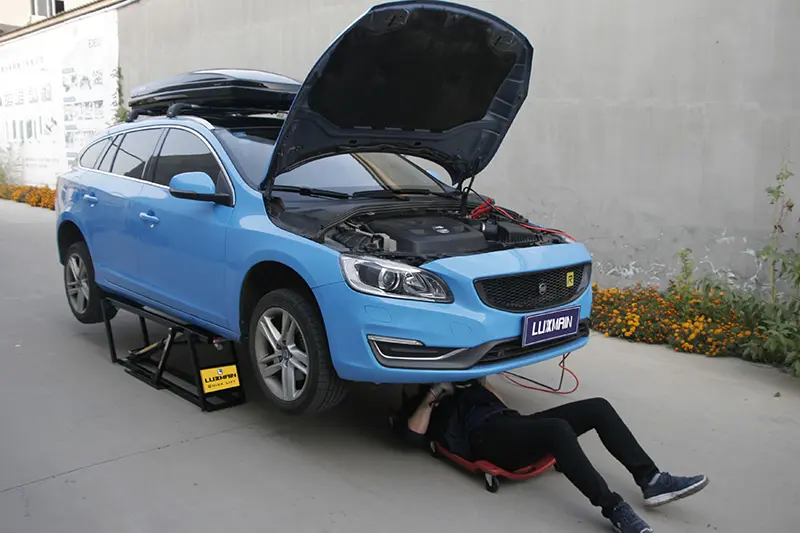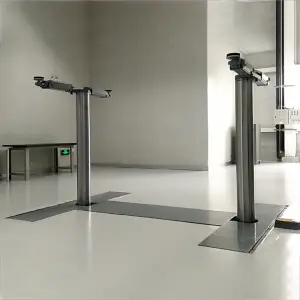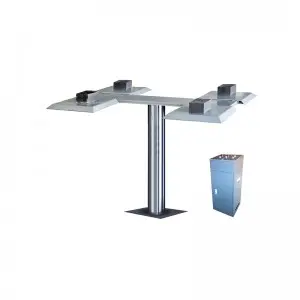[Inground lift]Exploring the Benefits and Applications of Inground Lifts in Automotive Service and Maintenance Facilities
****
In the ever-evolving world of automotive service and maintenance, professionalism and efficiency are paramount. As vehicles become increasingly complex and sophisticated, the equipment used to service them must keep pace with technological advances. One essential piece of equipment in many auto shops is the inground lift. Designed to enhance safety and improve workflow, inground lifts have become a staple in professional automotive facilities. This article explores the benefits, applications, and considerations of installing inground lifts in automotive service environments.
What is an Inground Lift?
Inground lifts are hydraulic or pneumatic lifting systems installed below ground level, allowing vehicles to be raised for servicing. Unlike conventional above-ground lifts, inground lifts are flush with the garage floor, providing an unobstructed workspace when not in use. This design not only saves valuable shop space but also allows for easy vehicle access from any angle, enhancing technician mobility and safety.

Exploring the Benefits and Applications of Inground Lifts in Automotive Service and Maintenance Facilities
Benefits of Inground Lifts
1. **Space Efficiency**: Space is often at a premium in automotive service facilities. Inground lifts provide a solution by minimizing the visual and physical impact on the workshop floor. Since they sit below ground, they do not consume any overhead space, enabling the shop to maintain a more open layout.
2. **Improved Safety**: With an inground lift, technicians can work at a comfortable height without the need for additional scaffolding or ladders. The risk of accidents associated with climbing or reaching over obstacles is significantly reduced. Furthermore, the durable construction of inground lifts ensures they can withstand heavy loads while maintaining structural integrity.
3. **Enhanced Workflow**: The flush design of inground lifts allows for better organization within the shop. Technicians can quickly maneuver vehicles in and out without worrying about the space taken up by traditional lifts. This ease of movement can lead to reduced turnaround times, which is a crucial factor in customer satisfaction and overall business efficiency.
4. **Versatile Applications**: Inground lifts are not just limited to standard vehicles. Many models can accommodate a wide range of vehicle types, including trucks, vans, and specialty vehicles, making them versatile for various automotive service needs. Specialized attachments can further expand their functionality, allowing for services such as alignment, oil changes, and detailed inspections.
5. **Durability and Longevity**: Inground lifts are designed to endure the rigorous demands of professional automotive service. Their construction often involves high-strength materials that resist corrosion and wear, ultimately leading to a longer lifespan compared to other types of lifts. This durability translates into lower maintenance costs over time.
Considerations for Installation

Exploring the Benefits and Applications of Inground Lifts in Automotive Service and Maintenance Facilities
While the benefits of inground lifts are significant, there are important considerations to discuss before installation:

Exploring the Benefits and Applications of Inground Lifts in Automotive Service and Maintenance Facilities
1. **Initial Investment**: The upfront cost of installing an inground lift can be higher than traditional lifts. This expense includes not just the lift itself, but also excavation, concrete work, and potential drainage solutions. However, many businesses find that the long-term savings and increased efficiency justify this initial investment.
2. **Installation and Maintenance**: Proper installation is crucial for the safe and effective operation of an inground lift. This often requires professional help to ensure that all components are correctly configured. Regular maintenance is also necessary to avoid issues; however, due to their construction, the maintenance needs are typically less frequent than traditional lifts.
3. **Floor Space Limitations**: Although inground lifts optimize the use of floor space, they do require a certain depth below ground for installation. Shops with existing concrete floors may need to undertake significant modifications, which can affect timelines and budgets.
4. **Accessibility**: Depending on the design of the inground lift, there may be considerations regarding access points and space around the lift for technician movement. Careful planning in the layout of the shop is vital to ensure optimal workflow and safety.
Conclusion
Inground lifts represent a forward-thinking choice for automotive service facilities looking to enhance their operational efficiency and safety. By offering a blend of space-saving designs, improved technician ergonomics, and versatile applications, they play a crucial role in modern automotive maintenance and repair. While the initial investment may be considerable, the potential for enhanced workflow, safety, and overall workspace efficiency makes inground lifts a worthwhile consideration for many automotive businesses. Investing in this innovative equipment could be the key to staying competitive in today’s fast-paced automotive industry.Cylinder
